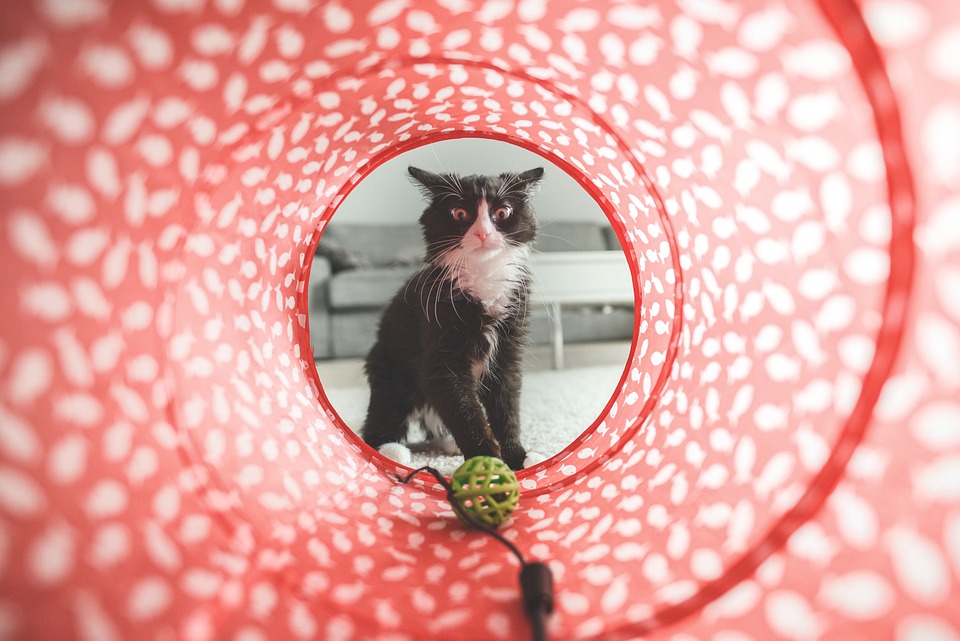Cats are known for their captivating and enigmatic behavior, and one of the most fascinating aspects of their communication is expressed through their tails. As a responsible cat owner, it is crucial to understand and interpret your feline friend’s tail language to better comprehend their emotions, intentions, and needs. In this article, we will explore the various meanings behind different tail positions and movements, helping you build a stronger bond with your beloved pet. So, let’s dive into the intriguing world of cat tail language!
Decoding Tail Positions: What Your Cat’s Tail is Trying to Tell You
1. Upright, Straight Tail: Confidence and Contentment
– When your cat holds its tail upright with a slight curve at the end, it signals a content and confident feline. This position is often observed during greetings or while your cat is exploring its territory.
2. Lowered Tail: Caution or Submission
– A lowered tail indicates a cautious or submissive mood. When your cat’s tail is down but not fully tucked, it may be feeling uncertain, anxious, or trying to avoid confrontation.
3. Puffed-up Tail: Fear or Aggression
– A tail that appears fluffy and puffed-up is a clear sign of fear or aggression. When a cat feels threatened, it tries to make itself look bigger by fluffing its tail, making it appear more intimidating to potential threats.
4. Tucked Tail: Fear, Anxiety, or Illness
– A tucked tail, where the tail is held tightly against the body, signifies fear, anxiety, or discomfort. Cats may also tuck their tails when they are unwell or in pain, so it’s important to monitor their behavior and seek veterinary attention if necessary.
5. Slowly Wagging Tail: Excitement or Anticipation
– When your cat’s tail sways slowly from side to side, it typically signifies excitement or anticipation. This tail movement is often observed when they are awaiting playtime, treats, or any engaging activity.
6. Flicking Tail: Irritation or Concentration
– A flicking tail, where the tail moves rapidly back and forth, is a sign of irritation or intense concentration. It could indicate that your cat is focused on something, such as stalking prey or feeling annoyed by a particular stimulus.
Understanding Tail Movements: Unveiling the Secrets Behind Cat Behavior
1. Tail Held High and Quivering: Friendly Greeting
– If your cat holds its tail high and gives a gentle quiver, it’s their way of extending a friendly greeting. Consider yourself lucky, as this tail movement signifies that your feline companion is genuinely happy to see you.
2. Tail Twitching: Hunting Instincts
– A tail twitching rapidly from side to side often indicates your cat’s hunting instincts have been triggered. This movement replicates the tail’s motion during a hunt, suggesting that your cat is focused and ready to pounce on potential prey.
3. Whipping Tail: Agitation or Anger
– A tail whipping back and forth swiftly is a clear indication that your cat is agitated or angry. This movement usually accompanies other signs of aggression, such as flattened ears or a tense body posture.
4. Curved Tail with a Hook: Playful Mood
– When your cat’s tail is curved with a slight hook at the end, it’s a playful invitation. This tail position is commonly seen when cats are engaged in interactive play or trying to initiate a game with their human companions.
FAQs: Addressing Your Cat Tail Language Queries
1. Why is my cat’s tail vibrating?
– A vibrating tail typically indicates heightened excitement or anticipation. It’s often seen when cats are eagerly waiting for their favorite activities, such as mealtime or play sessions.
2. What does it mean when a cat’s tail is constantly twitching?
– A constantly twitching tail can be a sign of stress, anxiety, or discomfort. It’s essential to assess your cat’s overall behavior and environment to identify potential stressors and address them accordingly.
3. Should I be concerned if my cat’s tail is always tucked?
– If your cat’s tail is consistently tucked, it might indicate anxiety, fear, or potential health issues. Observe your cat’s behavior and consult with a veterinarian to rule out any underlying medical conditions.
4. Why does my cat wrap its tail around me?
– When a cat wraps its tail around you, it demonstrates trust, affection, and a sense of ownership. Consider it a heartwarming gesture that signifies your cat’s bond with you.
Understanding your cat’s tail language can significantly enhance your communication and strengthen the bond you share. Remember, every cat is unique, and tail movements should always be interpreted in conjunction with other body language cues. By being attentive and observant, you’ll become an expert in deciphering your cat’s tail language, unlocking the secrets of their emotions and needs.








